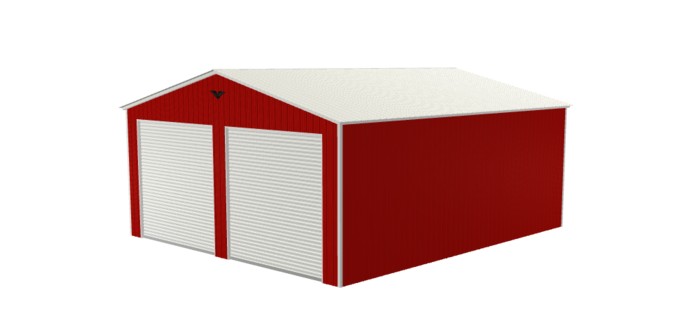It can be challenging to parse through all the local legislation telling you whether you’re allowed to erect a permanent or a temporary structure, especially when it seems that your building falls into a gray area. Fortunately, metal buildings can be either, and the definitions are pretty clear when you look at the criteria.
Whether your steel building will be considered a permanent or temporary structure is mainly dependent on whether it will be built on a permanent foundation. If your building will be secured with the type of anchor and foundation system described above, it is legally a permanent structure.
There are many things to consider when determining whether your metal building should be constructed on a permanent foundation. Above all, you’ll have to consider your needs for the building along with the area in which it’ll be placed. Read on to learn what constitutes a permanent metal building and how to decide whether yours should be permanently fixed in place or a temporary structure.
What Determines a Metal Building’s Permanence?

To understand what constitutes a permanent metal building, consider the example of the Chesterfield County Building Inspection Department. This department requires that all steel buildings (i.e., sheds, carports, etc.) that are between 257 and 400 square feet are built with permanent foundation systems. These foundations must include either concrete piers or full slabs forming a “continuous concrete footing.” (Source: Chesterfield County Building Inspection Department)
Any metal building of these sizes or larger (buildings greater than 400 square feet also require concrete foundations) would be considered permanent as well. The New Castle County Unified Development Code (UDC) also presents similar requirements, with one additional condition:
Any carports, sheds, or other metal buildings that are not designed for frequent relocations are considered to be permanent structures.
In other words, if you plan to keep your metal building in the same location for years to come, instead of moving it around or breaking it down to for reconstruction during special occasions, then New Castle County would deem it a permanent structure. (Source: New Castle County, Delaware)
Should Your Metal Building Be Permanent or Temporary?
Still, none of this is to say that no matter what type of metal building you need, it will be considered permanent. Even if you only need it temporarily, you can still have a metal building added to your property.
When deciding whether your building should be permanent or temporary, consider the following points (Source: Entrepreneurship in a Box):
- Predicted project timeline: Determine the timeline you have to get your building up and complete. If you the final structure sooner rather than later, you might want to opt for a temporary metal building. Rushing a permanent steel frame building can result in disastrous impacts on the integrity of the build. Plus, a permanent metal structure may not be plausible within your timeframe. It’s best not to push it and stay safe with a temporary building instead.
- How the building will be used: Consider why you are having the building erected in the first place. What will you be using it for? If you will be using it as a place of business, it may be best to be patient and request a permanent structure. On the other hand, housing animals could go either way. If you are installing a shelter on a large ranch for adverse weather, you might plan on moving it with seasonal changes. You could also install permanent barns, depending on your needs.
- Budgeting: Of course, costs associated with building a brand-new steel frame building can change depending on a myriad of factors. You can generally count on temporary structures being far cheaper than permanent ones. However, in the long-term, you may find that a permanent option is much better for your finances.
Legal Definitions of a “Permanent Structure”
As previously mentioned, the presence of a foundation is a central part of what defines a building as permanent. Though tens, possibly hundreds, of legal definitions of a “permanent structure” exist, nearly all of them revolve around this central feature.
This is demonstrated clearly in the following two examples of legislation (Source: Law Insider):
- “Permanent structure means a non-movable building, securely attached to a foundation, housing a business.” This applies to the state of Utah.
- “Permanent structure means a building or structure that is anchored to a permanent foundation with an impermeable floor, and that is completely roofed and walled.” This applies to the state of New Jersey.
Despite this standard, many states and municipalities base a metal building’s permanence on its uses. For example, some government codes specify that the building must be used for business or other public uses for recognition as a permanent construct. Others require that walls and a roof fully enclose the building, or that it remains in place for at least 30 days to be categorized as permanent.
In Conclusion
Your location will heavily influence the factors that determine whether your metal building will be legally regarded as permanent. Before commissioning the construction of a new steel frame building, review your needs according to the questions listed above and check your local policies. This is critical to ensuring your contractor can meet your needs accordingly, with the appropriate permits.
Remember that part of what constitutes a permanent metal building is the foundation it’s built upon. Most likely, you’ll end up choosing a permanent structure and foundation, especially if you intend to do business or house livestock in your structure. Consult with your contractor as well to determine which option would be best for you.



Recent Comments